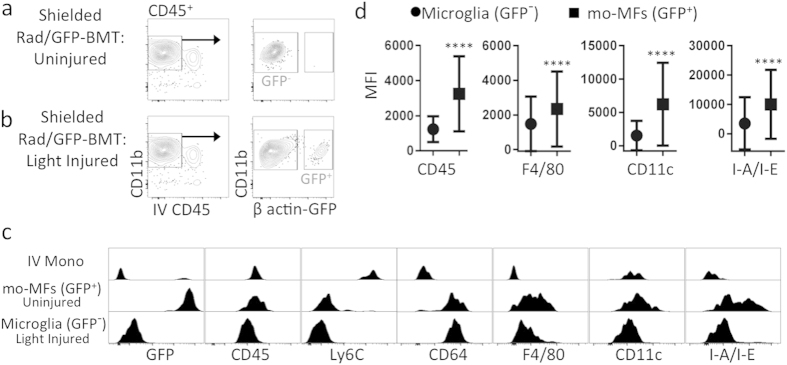Figure 3. Microglia and recruited mo-MFs are phenotypically distinguishable in light injury, as revealed in shielded Rad/GFP-BMT hosts.
(a) Head shielding protects host mice from radiation and radiation-induced Mo recruitment. C57BL/6 mice were irradiated with shielding then given donor GFP+ bone marrow. Retinas were analyzed 3 months later. Cells were pre-gated on live CD45+ singlets. (b) Light injury leads to myeloid cell recruitment in shielded Rad/GFP-BMT hosts. Three months after shielded Rad/GFP-BMT, mice were then subjected to light challenge (or not) and retinas were harvested 7 days later for analysis. Cells were pre-gated on live CD45+ singlets. (c,d) Comprehensive phenotypic analysis reveals that microglia have a CD45lo CD11clo F4/80lo I-A/I-E− profile during light injury, which is significantly different from recruited mo-MFs. GFP− microglia from retina of uninjured mice were compared to GFP+ mo-MFs and IV Mo from retinas of light-injured mice. Significant differences of data shown (mean ± s.d.) were determined across samples by an unpaired t test (****p < 0.0001). Light injury data is representative of n = 4 individual samples; pre-light injury data is comprised of n = 2 individual samples that are representative of 2 independent experiments.

